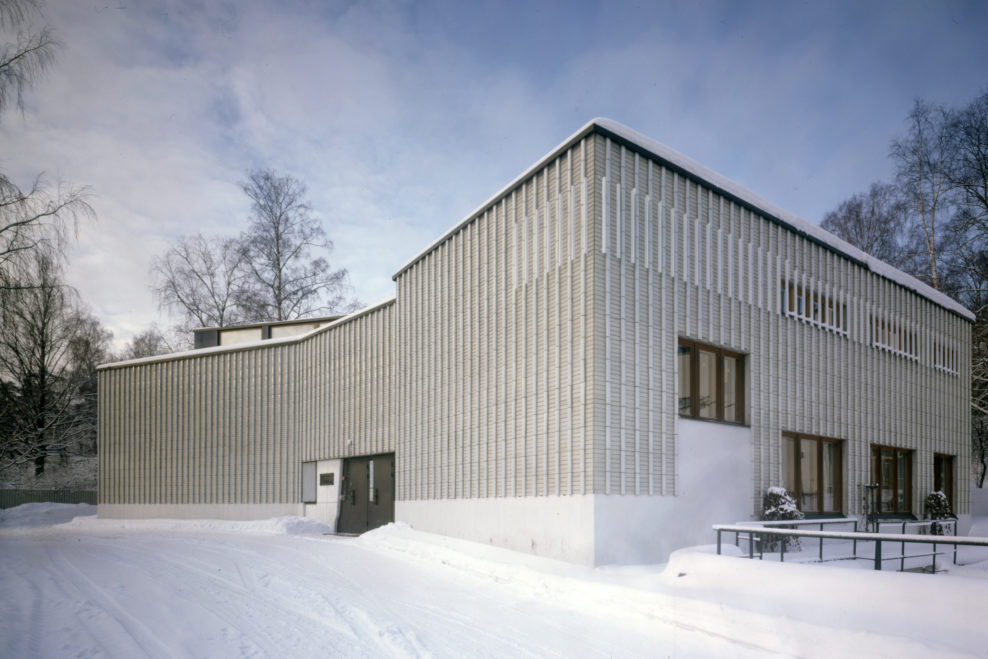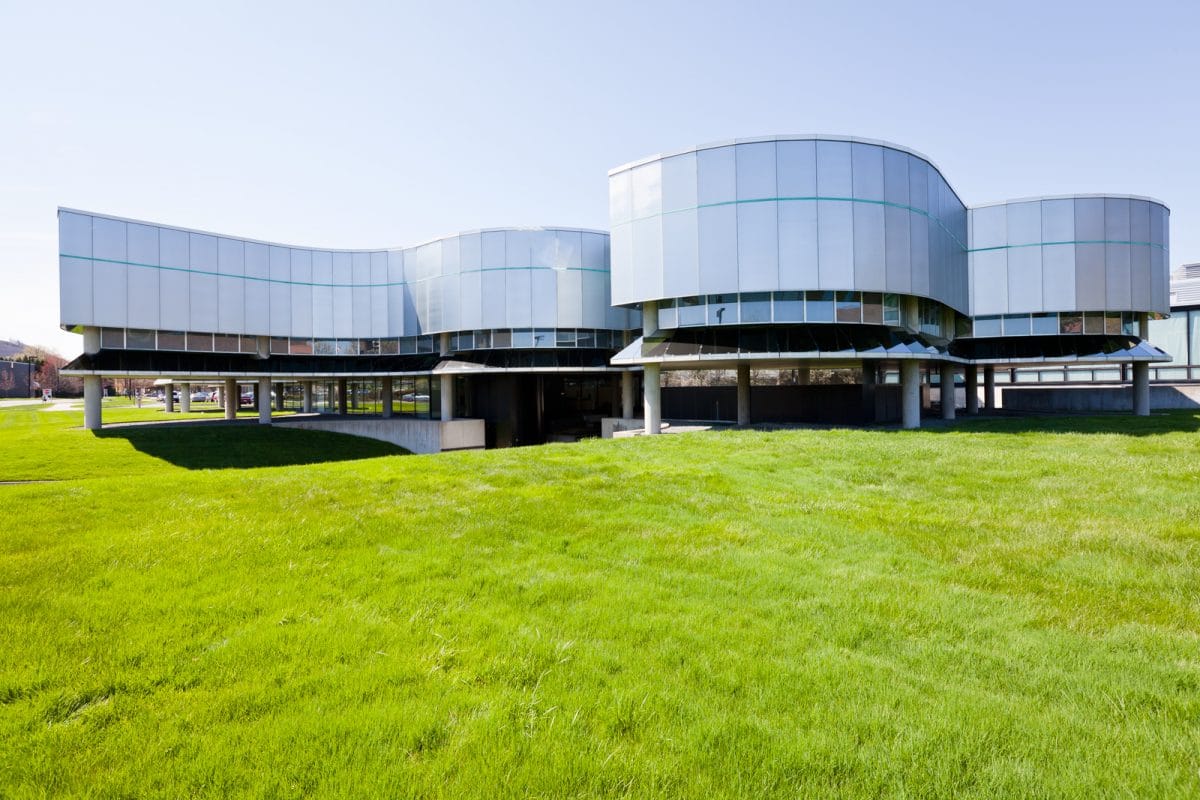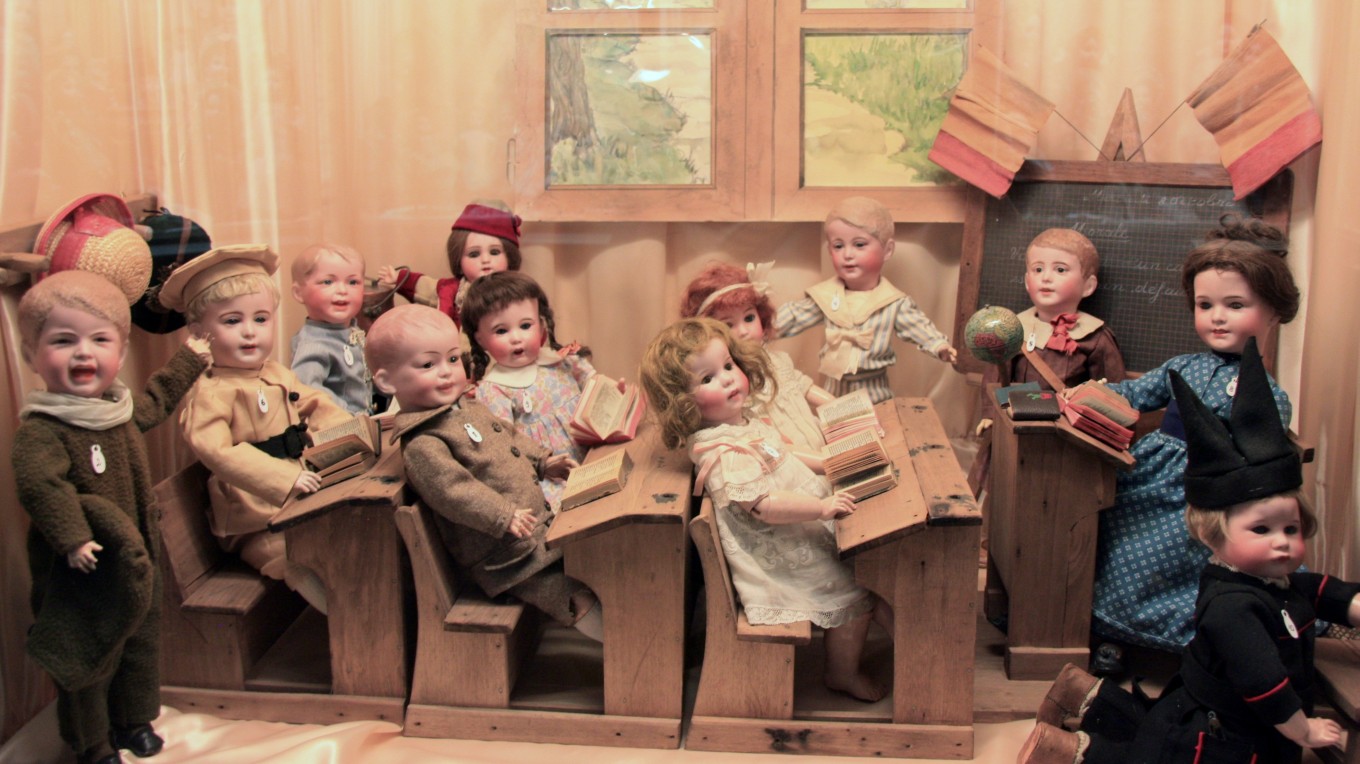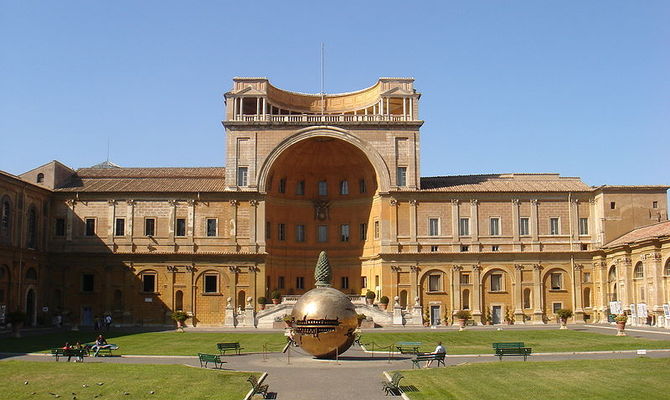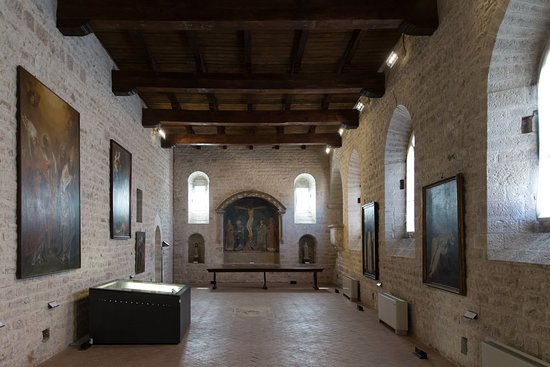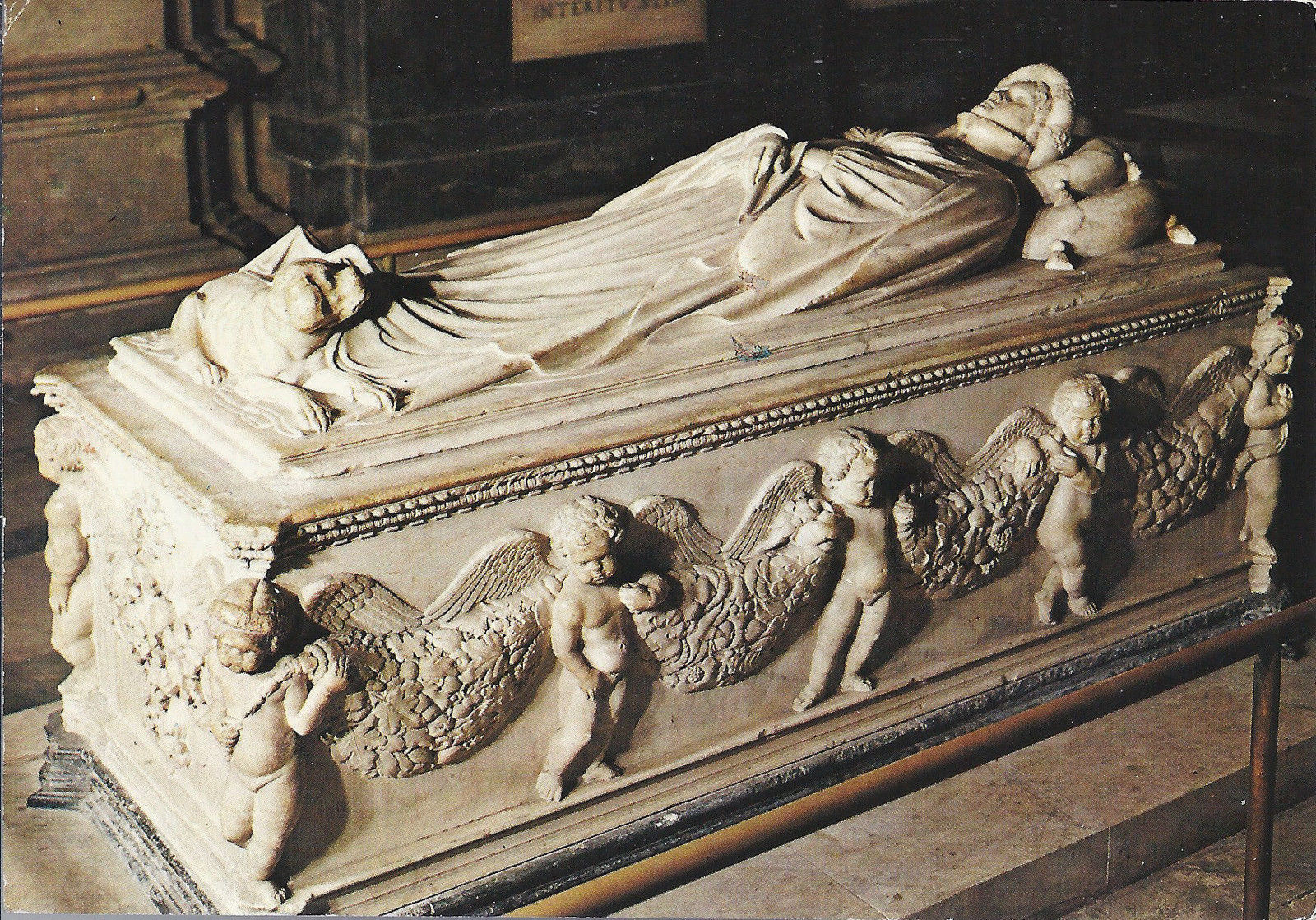The Alvar Aalto Museum is located on a slope by Lake Jyväsjärvi, next to the University of Jyväskylä and the Museum of Central Finland. The first plans for the museum building were completed in 1970. Alvar Aalto finalised his designs in 1973. The area of the museum had to be reduced because of limited financial resources. In accordance with the original designs, the exhibition space on the first floor is divided into areas with movable partitions. The highest part of the hall has slatted pine panels on the walls, resembling the wall structure of Finland’s pavilion at the New York World Fair, designed by Aalto in 1939. All furniture in the museum is designed by Aalto. The facade is built of white Halla bricks manufactured by Arabia and embellished by porcelain strips. The main doors have a copper surface and brass handles designed by Aalto. For a long time, the museum specialised in architecture and visual arts. Today, it focuses on fostering the heritage of Alvar Aalto.
